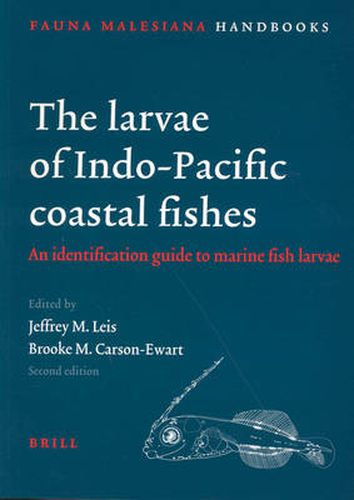Readings Newsletter
Become a Readings Member to make your shopping experience even easier.
Sign in or sign up for free!
You’re not far away from qualifying for FREE standard shipping within Australia
You’ve qualified for FREE standard shipping within Australia
The cart is loading…






Now available in paperback, this second, revised volume in the Fauna Malesiana Handbook series gives an extensive overview of larval development in 125 fish families, many of which are important from both ecological and fishery perspectives. The families described are from the center of global marine biodiversity: the tropical Indo-Pacific, a region rich in coral reefs, as well as mangrove, estuarine, and coastal shelf habitats. This handbook covers fishes from all these habitats and not only documents their ontogeny, but also provides the means to identify their extraordinarily diverse larvae to the level of family. As well as detailed descriptive text, the book offers a wealth of instructive and detailed illustrations (219 plates, each consisting of approximately 4 figures) and an illustration-based identification guide. The book focuses on the tropical regions of the Indo-Pacific, but many of the 125 families also occur in other tropical waters as well as in warmer temperate seas, so this handbook will also be of great value for workers in these regions.
$9.00 standard shipping within Australia
FREE standard shipping within Australia for orders over $100.00
Express & International shipping calculated at checkout
Now available in paperback, this second, revised volume in the Fauna Malesiana Handbook series gives an extensive overview of larval development in 125 fish families, many of which are important from both ecological and fishery perspectives. The families described are from the center of global marine biodiversity: the tropical Indo-Pacific, a region rich in coral reefs, as well as mangrove, estuarine, and coastal shelf habitats. This handbook covers fishes from all these habitats and not only documents their ontogeny, but also provides the means to identify their extraordinarily diverse larvae to the level of family. As well as detailed descriptive text, the book offers a wealth of instructive and detailed illustrations (219 plates, each consisting of approximately 4 figures) and an illustration-based identification guide. The book focuses on the tropical regions of the Indo-Pacific, but many of the 125 families also occur in other tropical waters as well as in warmer temperate seas, so this handbook will also be of great value for workers in these regions.